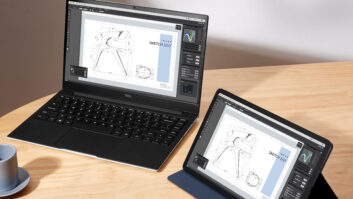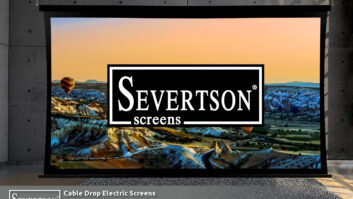More consumer electronics suppliers are looking to join Amazon and Sony in offering e-book readers although the business model may prove to be unfriendly.
With Amazon’s Kindle selling more than 800,000 units since the beginning of 2008 (according to Citi Investment Research) and with the newest Kindles 2 and DX receiving roaring media hype, it is not surprising that traditional CE suppliers including Brother, Sanyo and Nextar, are examining the market, and a British start-up Interead has announced a new e-reader for June 1.
Insight Media called the level of activity among suppliers considering an e-book product over the past six months a “feeding frenzy,” according to president Chris Chinnock.
Retailers are asking for it, said Andy Frankel, Nextar business development and operations VP, “The technology is readily achieved. Our point of concern is content and what our value-added would be.”
An e-book device is on Sanyo’s radar, although no product is planned for 2009, according to Isaac Levy, president, consumer solutions division.
Brother, which offers an e-reader in Japan, said it is examining the possibility of marketing the e-reader in the U.S., according to a spokeswoman. None of the three companies have committed to shipping an e-reader.
Industry members say the cost of producing a basic e-book reader device with a 6-inch screen is not prohibitive, although it might take 12 to 18 months to bring the device to market due to the need to align with an e-book store and create a pipeline for downloading the books (which Amazon so elegantly achieved with free 3G over-the-air downloads).
So while other products could easily enter the market in the next year, there would be little to differentiate them from the Kindle or Sony’s Readers, or from pre-announced e-readers from Plastic Logic, due in early 2010, and Polymer Vision (no announced ship date).
“If you came in with an also-ran that doesn’t have anything extra, it would be very difficult for you to be successful in this market,” said Francis Sideco, senior analyst wireless communications for iSuppli.
Approximately 2 million e-book readers will sell this year, increasing to 19 million by 2013, said Insight Media. But other analysts said it might take 10 years or more for e-book readers to become mass-market items because of competition from smartphones, ultra-mobile PCs (UMPCs) and netbooks.
In the e-readers’ favor, they are better designed for long reading sessions. Smartphones are subject to quick battery drain when used as e-readers by an avid reader, said industry members. By contrast, purpose-built e-readers only “sip” battery power due to a technology by E Ink that draws power only when a page is turned.
Plus, there is mounting interest on the part of newspaper publishers who might be willing to subsidize e-readers and growing interest from universities who might promote the technology to students.
Amazon announced this month it will partner with three newspapers: New York Times, The Boston Globe and The Washington Post, who will subsidize the Kindle DX, shipping this summer, in exchange for a newspaper subscription.
Amazon also announced that four textbook publishers will begin trials this fall, offering students e-textbooks via the Kindle at seven universities, including Princeton. The e-textbooks are expected to be less expensive than printed versions.
If e-textbooks catch on, they may help advance the e-reader market, said analysts. Imagine kids with only one lightweight e-reader in their backpack instead of a load of heavy books.
iSuppli concluded that there is yet room for a new e-book entrant if it manages to overcome the industry’s problem of “fracturization” between the various formats for e-books. Amazon and Sony each use their own format, and various competing formats are used on sites such as eReader.com (owned by Barnes and Noble) and eBook.com, says Sideco. There is room in the market for a product that can permit downloading from multiple sites and do it well, he said.
Market newcomer Interead is moving toward that goal. The company will release in June a new low-cost ($249) “Cool-er E-book” reader and launch a companion Web site for selling e-books called www.coolreaders.com. The device also works with other websites that use EPUB and Adobe PDF, said the company. With a 6-inch screen, the device is slimmer and lighter than other e-readers, says Interead. The unit will sell only on the company website initially. It also requires a link to a PC to download books.
For its part, Amazon will ship its new Kindle DX with a 9.7-inch screen at $489. It adds other advances over the current Kindle 2, which sells for $359, including a built-in PDF reader, an auto-rotate feature to switch from landscape to portrait mode and a larger capacity to hold 3,500 books (vs. 1,500 in the Kindle 2). Amazon’s e-book library now includes 275,000 books, and e-book sales are tracking at 35 percent for those titles available in both e-book and traditional book formats, said Amazon.









